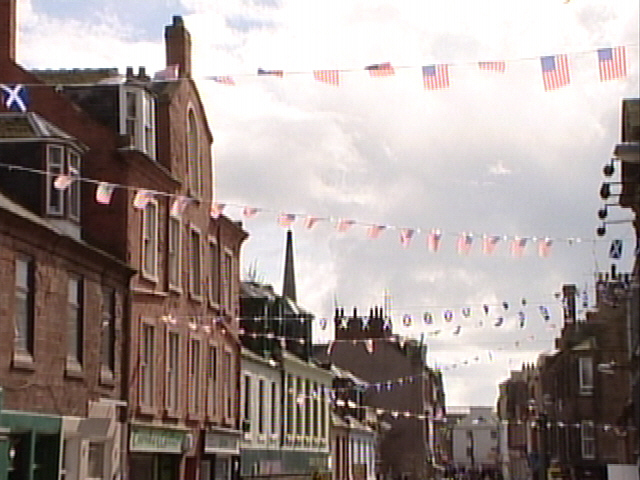
John Baxter Wighton, his wife Catherine, his sister Mary Ann, his daughter Fanny Boath, and Fanny's family lived in Arbroath late in the 19th century. The town lies on the southeast coast of Angus at the mouth of the Brothock Burn (see map of Angus at the bottom of this page). It lies about 16 miles south of Montrose and about 17 miles north of Dundee. When Wightons were resident, the town was a station on the Dundee to Montrose railway line. There was also railway service to Forfar and points further west.
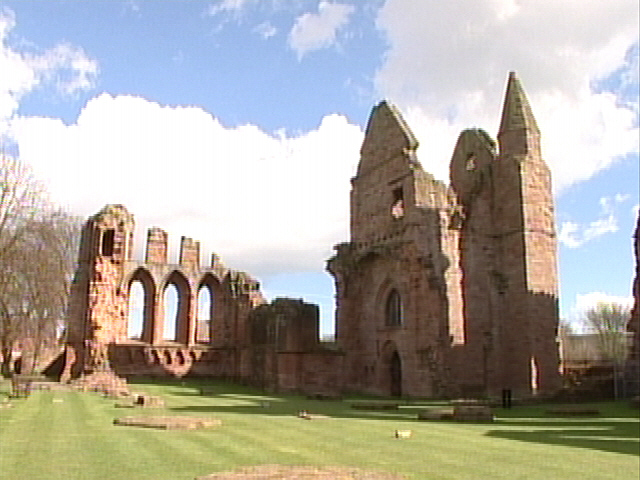
An ancient abbey, now in a state of picturesque decay (above), is the most imposing object in the town. This stands in High Street, near the parish church. (According to John Baxter and Catherine Wighton's death records, they lived in a house on High Street before their death.) It was founded in 1178 by William the Lyon, and dedicated to Thomas a Becket. The monastery was richly endowed by William and his successors, and by various Scottish barons, and was one of the most opulent in the kingdom.
Perhaps the high point in the history of Arbroath Abbey was in April 1320. The Abbot at the time was Bernard de Linton, who drafted the Letter of Arbroath, thought by many to be the most important document in Scottish history. This was a letter written to Pope John XXII on behalf of Robert the Bruce, and signed by most of the great and good of 14th Century Scotland. It asked the Pope to put pressure on Edward II of England to recognise Robert as the legitimate King of Scotland. The Letter is famous for one phrase in particular: as long as a hundred of us remain alive, we shall not on any condition be subjected to English rule. Much more significant was the implication elsewhere in the letter that in future the King of Scotland could only rule with the approval of the people of Scotland. It was the first time anyone, anywhere, had thought about royalty in this way. The letter persuaded the Pope to arrange peace talks, though they proved unsuccessful.
Arbroath has been a manufacturing center since the early part of the 18th century. In 1792, as much as 1,055,303 yards of osnaburgs and brown linen, valued at 39,660 Pounds, were stamped in the town. The making of sailcloth, in the same year, employed nearly 500 weavers. The spinning of flax by steam power was introduced in 1806 and took root as a permanent employment. There were 18 mills in 1867 with 36,732 spindles, 830 power-looms, and 4,941 persons employed. By 1875 there were 34 spinning mills and factories, all driven by steam, with 40,000 spindles, and fully 1100 power-looms, which, together, turned out weekly about 450,000 yards of cloth. There were also bleachfields, calendering establishments, tanneries, engineering works, asphalt and tar factories, chemical works, and a shipbuilding yard.
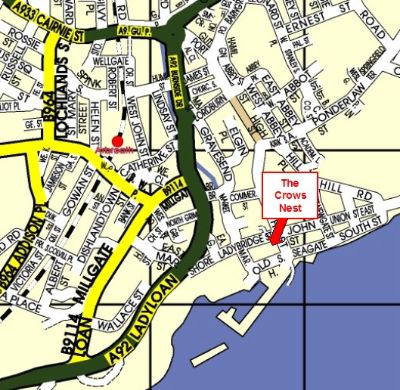
On the above map, you may be able to see two of the streets where the Wightons lived. Wallace Street is in the lower left corner, just above the dark green street. High Street is marked in light brown and can be found near the middle of the map. Below is a picture of the funeral chapel in the cemetery where John and Catherine are buried.
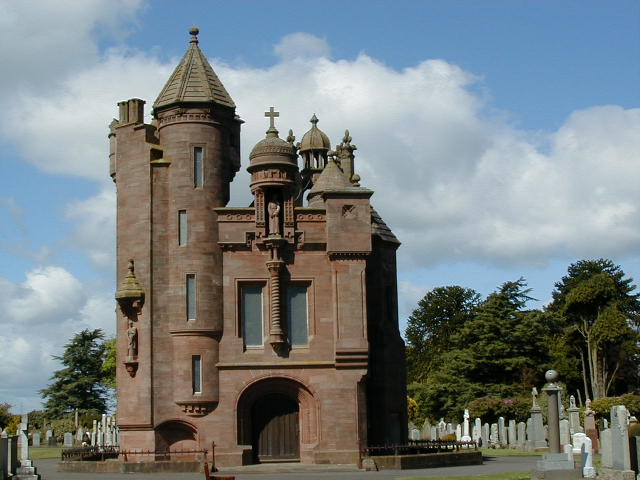
Below is a map of Angus which will give you a sense of Arbroath's location in Angus.
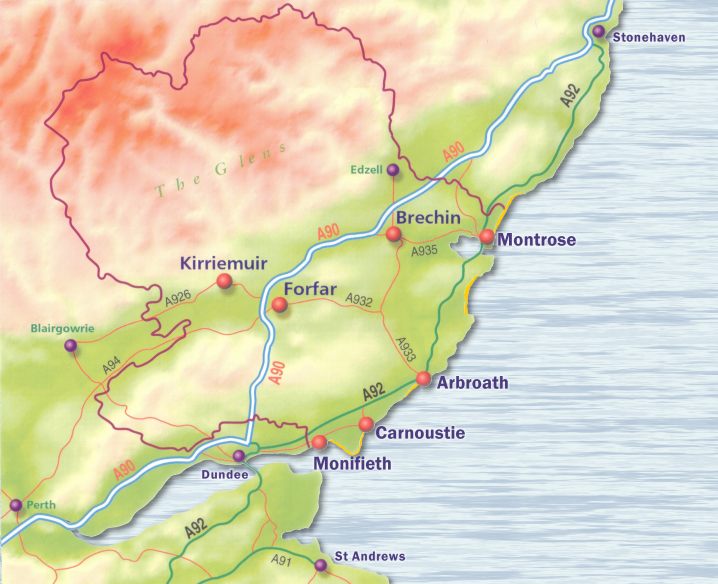
Sources
Various websites.